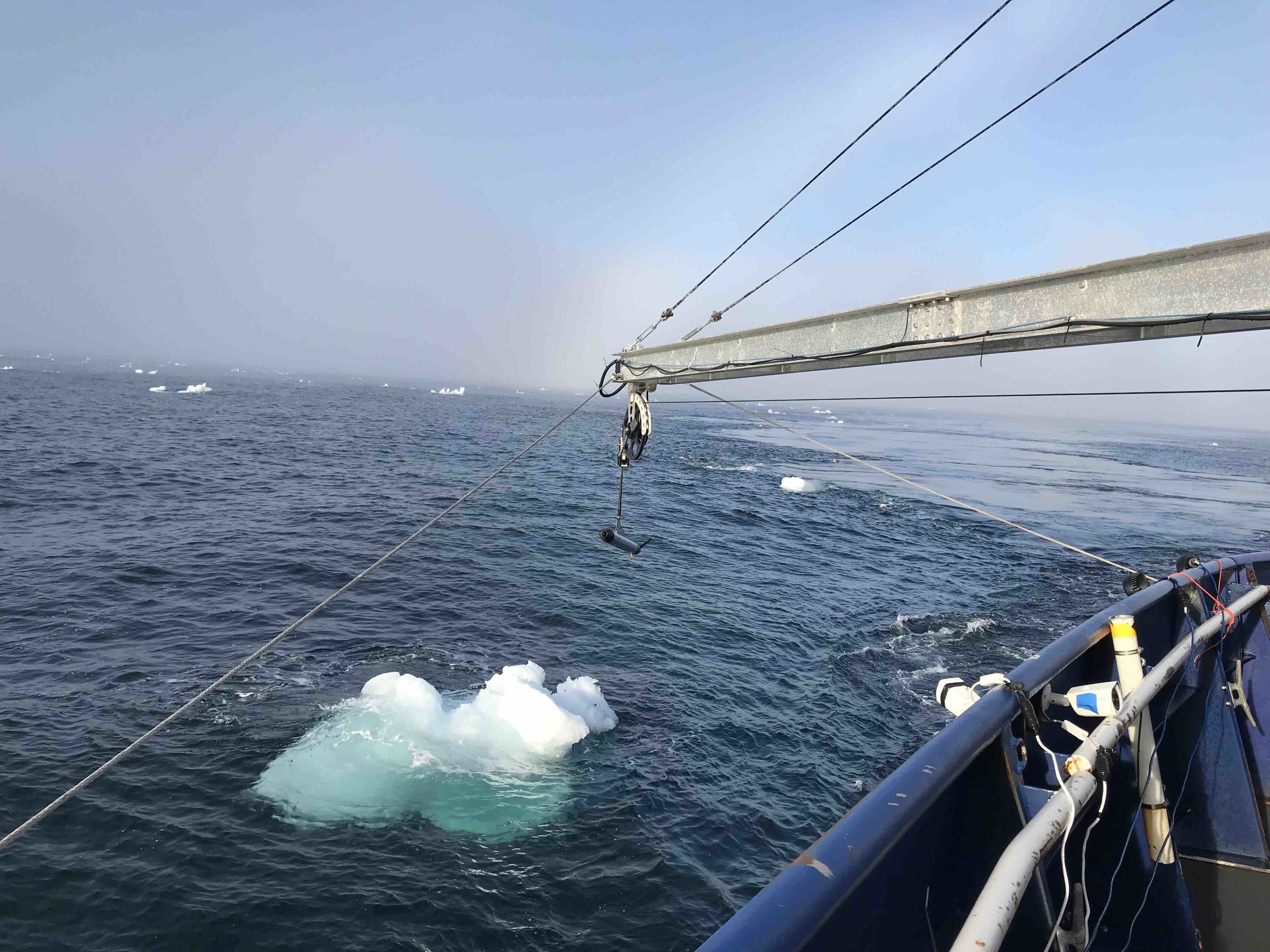Greetings from the Gulf of Mexico!
The crews aboard the Point Sur and the Pelican are sampling away, running all sorts of zig zag patterns and repeat lines in the Gulf of Mexico with various instruments in the water trying to cross fronts and capture small scale variability in the ocean. That means we have some form of sampling happening 24/7 and we work in 12h shifts to always have a group of people in charge of instruments. Big thanks goes to the LUMCON (Louisiana Universities Marine Consortium) based ships and crew for taking good care of us and putting up with our ever changing plans chasing fronts and other cool features.
Deployment of a Wirewalker mooring
Why are we out here?
The SUNRISE, or Submesoscales Under Near-Resonant Inertial Shear Experiment, project is a collaboration between Oregon State University, SIO, Stanford, Texas A&M University, Cambridge, UK, with the goal of looking into mixing and water exchanges as a result of various physical processes in a complex coastal environment in the northern Gulf of Mexico. A better understanding of what drives the mixing of different water masses with different properties (temperature, salt, oxygen, different biological properties) will help protect this region, a dynamic and productive environment, critical for the success of fisheries, tourism, and local economies.
Shrimping vessel in the Gulf of Mexico.
In order to identify various properties of the water and the flows we are using a smorgasbord of sensors that can measure temperature and salinity (CTD) as well as velocities (like an ADCP, Acoustic Current Doppler Profiler) and various biological sensors that can measure things like chlorophyll, dissolved organic matter, oxygen and more. We’re also using a VMP (Vertical Microstructure Profiler) to measure the microstructure flows, aka turbulence, which is a sign of mixing.
MOD’s Devon ready to deploy the VMP
The VMP is deployed using a fishing reel and a block on the ship’s crane. We need a fan and a steady supply of ice to cool down the winch in the heat.
Since the waters are very shallow, typically 30-50m or less, we’re using a rather unconventional approach to sampling the whole water column. We’re literally dropping our instruments all the way down to the bottom and then pulling them back up again. The instruments have crash guards attached to them to protect the sensors (which are all on the bottom facing end of the instrument) from slamming into the seafloor. This way we can get vertical profiles of different variables every 100-200 m with the ship going at about 3 knots.
Why the top of the VMP instrument looks a little like a toilet brush? It’s for making the fall rate optimal and make sure the profiler falls vertically.
Sometimes the crash guards catch seaweed that needs to be removed since it influences the flows (turbulence) around the sensors.
24/7 deck operations means both sunrises and sunsets…
Follow along with more live updates on Instagram @mod_at_scripps.
Sea you later!
Text and photos by Kerstin Bergentz





















